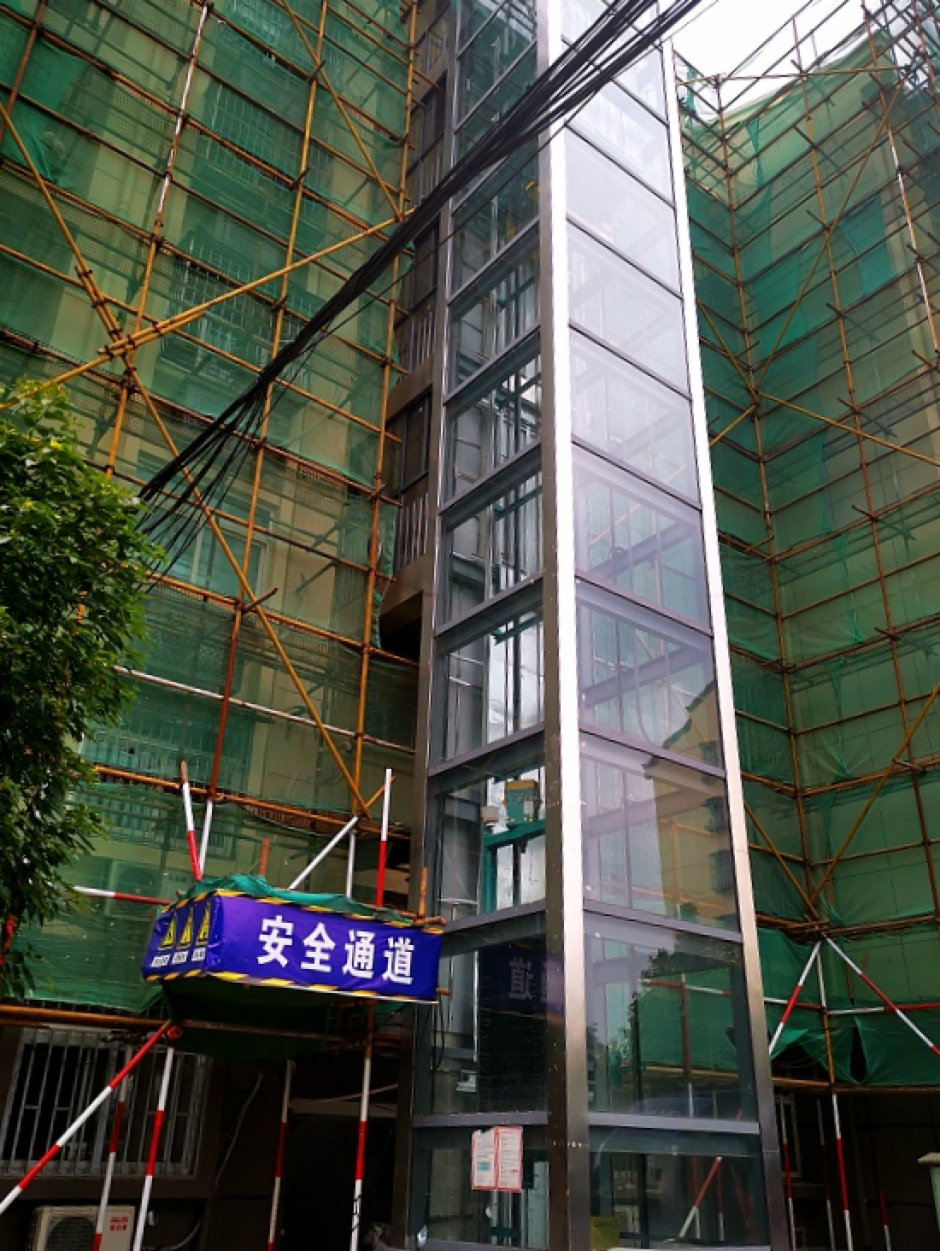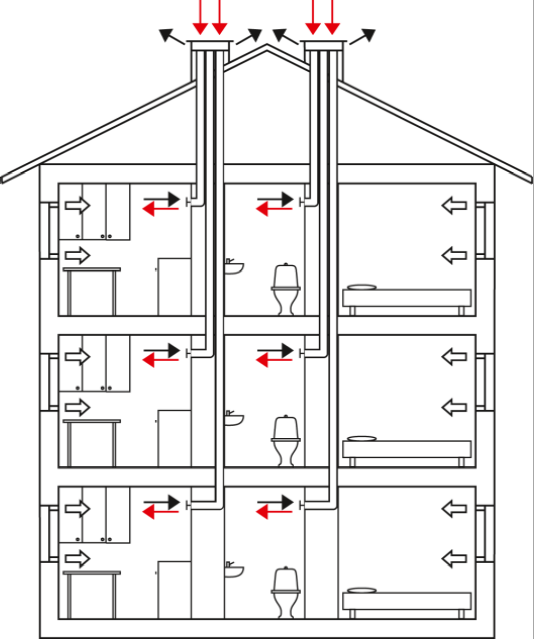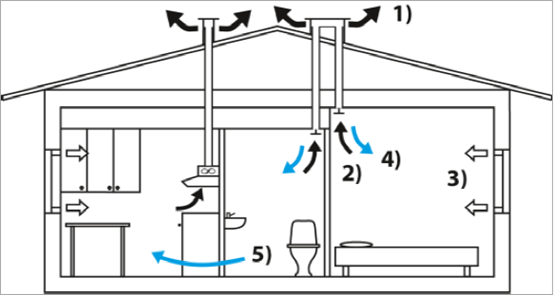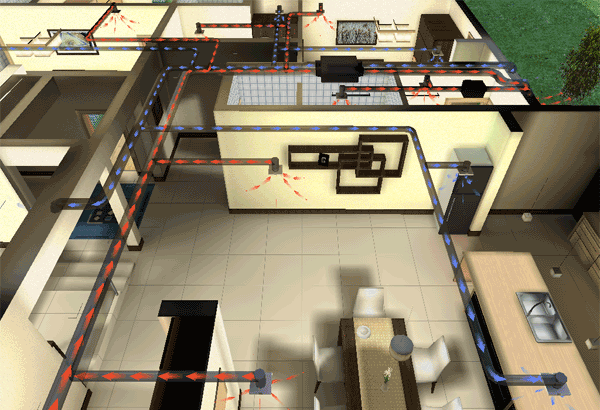A news from CCTV(China Central Television) about “Jiangsu residential design standards revised: every residential house should install with fresh air system” catch our attentions recently, which remind us the indoor air quality matters in Europe, same here in China as well now.
The epidemic prompted people to pay more attention to indoor air quality. Therefore, the standard requires that each house should be equipped with an organized fresh air ventilation system.

Meantime, ESD, Cohesion and Riverside Investment & Development are deploying a state-of-the-art indoor air quality (IAQ) program this summer. The first building to host the program will be Chicago’s 150 North Riverside.
This collaborative program will deliver enhanced levels of safety, comfort and assurance to occupants as they return to the building amid the COVID-19 pandemic. The program holistically combines secondary air purification, the most advanced commercial filtration system on the market, ventilation rates that significantly exceed national standards, and 24/7/365 indoor air quality and pollutant measurement and verification.
So today let’s talk something about the ventilation.
There are 3 methods that may be used to ventilate a building: natural ventilation,
exhaust ventilation, and heat/energy recovery ventilation
Natural ventilation
As natural ventilation is based on pressure differences created by differences in temperature and wind velocity some conditions can create pressure profiles that will reverse the air flows, and potentially the exhaust air stacks, which may be contaminated, could become routes for supply air, and so spread contaminants into the living rooms.

In some weather conditions, the flow in the stack may be reversed (red arrows) in the natural ventilation systems which rely on temperature difference as a driving force for ventilation.
Besides, if the owner uses cooker hood fans, a central vacuum cleaning system or open fireplaces may adversely affect the desired pressure differences from the natural forces and reverse the flows.

1) Exhaust air in normal operation 2) Extract air in normal operation 3) Ventilation air in normal operation 4) Reversed airflow 5) Transfer air due to the operation of cooker hood fan.
The second option is exhaust ventilation.
This option has been in existence since the mid 19th century and has been very popular in both residential and commercial spaces. In fact, it’s been a standard in buildings for decades. Which with the advantages of the mechanical exhaust ventilation like:
- Constant ventilation rate in the dwelling when using the traditional system;
- Guaranteed ventilation rate in each room with a dedicated mechanical exhaust ventilation system;
- Small negative pressure in the building prevents moisture mitigation into the construction of external walls and so pre-vents condensation and consequently the mold growth.
However, mechanical ventilation also involves some drawbacks like:
- Air infiltration through the building envelope may create draughts in winter or specifically during periods of strong winds;
- It utilizes a great deal of energy, but the heat recovery from the exhaust air is not easy to implement, with climbing energy costs this has become a major issue for many companies or families.
- In the traditional system, the air is usually extracted from kitchens, bathrooms, and toilets, and ventilation supply airflow is not evenly distributed in the bedrooms and living rooms since they are influenced by the resistance in grilles and around internal doors;
- Distribution of ventilation outdoor air depends on the leakage in the building envelope.
The last option is energy/heat recovery ventilation.

Generally, there are two ways to reduce energy demand for ventilation:
- Adjust ventilation according to the actual demand;
- Recover the energy from ventilation.
However, there are 3 emission sources in buildings which must be considered:
- Human emissions (CO2, humidity, odors);
- Emissions created by humans (water vapor in kitchens, bathrooms, etc.);
- Emissions from building and furnishing materials (pollutants, solvents, odors, VOC, etc.).
Energy recovery ventilators, sometimes called enthalpy recovery ventilators, it works by transferring the heat energy and moisture from your stale indoor air to drawn-in fresh air. During the winter, the ERV vents your stale, warm air to the outside; at the same time, a small fan draws in fresh, cool air from outside. As the warm air is expelled from your home, the ERV removes the moisture and heat energy from this air and pre-treats the incoming cool fresh air with it. In the summer, the opposite happens: the cool, stale air is exhausted to the outside, but the dehumidified, exiting air pre-treats the incoming moist, warm air. The result is fresh, pre-treated, clean air entering the airflow of your HVAC system for dispersal throughout your home.
What can benefit from an energy recovery ventilation, at least with the points as follows:
- Increase in energy efficiency
ERV has a heat exchanger that can heat or cool incoming air by transferring heat to or away from outgoing air, so it can help you conserve energy and lower your utility bills. An energy recovery ventilator is an investment, but it will eventually pay for itself by reducing costs and increasing comfort. It can even increase the value of your house/office.
- A Longer Life for Your HVAC System
ERV can pre-treating the incoming fresh air helps reduce the amount of work your HVAC system has to do, which helps reduce your system’s overall energy usage.
- Balanced humidity levels
During the summer, the ERV helps remove excess moisture from the incoming air; during the winter, the ERV adds needed moisture to the dry cool air, helping to balance the humidity levels of indoor.
- Improved indoor air quality
Generally, energy recovery ventilators have it’s own air filters to capture pollutants before they enter your home and impact your family’s health. When these devices remove stale air, they get rid of dirt, pollen, pet dander, dust, and other contaminants, as well. They also reduce volatile organic compounds (VOCs) such as benzene, ethanol, xylene, acetone, and formaldehyde.
In low energy and Passive Houses, at least 50% of heat losses are caused by ventilation. The example of Passive Houses shows that the heating need can only be significantly reduced by using energy recovery in ventilation systems.
In a colder climate, the impact of energy/heat recovery is even more critical. Generally, nearly zero energy buildings (required in the EU from 2021) can only be built with heat/energy recovery ventilation.
.
Post time: Jul-20-2020









